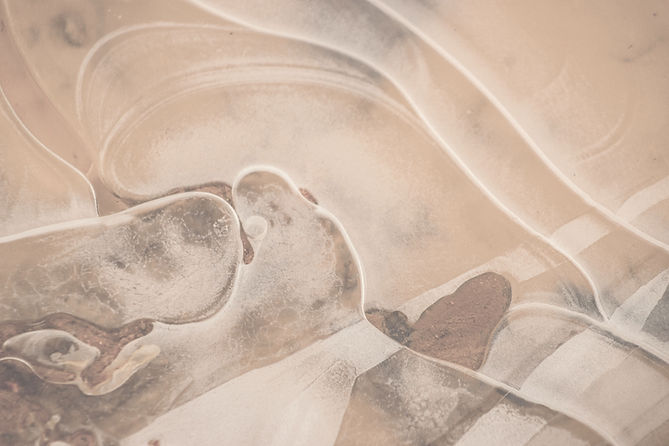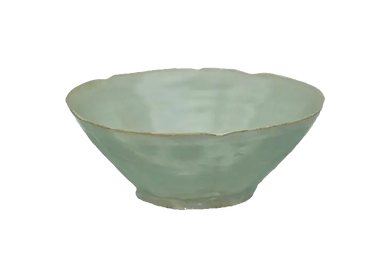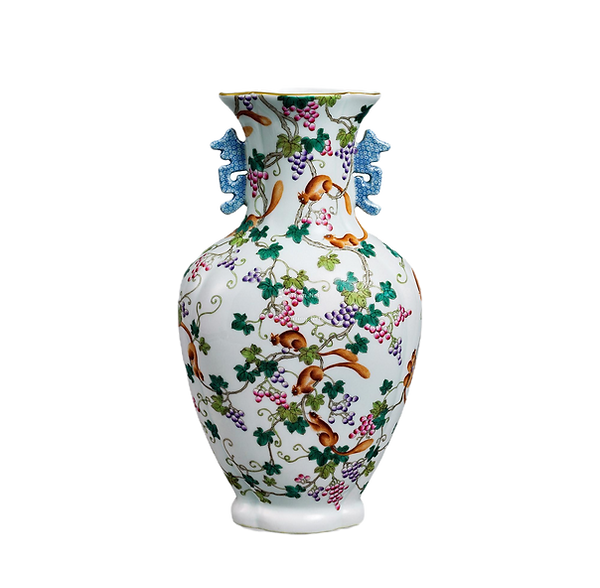
Porcelain
At the beginning of human history, fire brought humans warmth and courage. As we used fire to cook, we gradually discovered soil that would solidify under heat. This accidental discovery became an intentional motive, inspiring our ancestors to build fire kilns and marking the birth of this long-lasting tradition in culinary practices across cultures.
Jingdezhen
Where it all began.
With its rich natural resources and advanced technology, Jingdezhen has reached the peak of its porcelain industry and has become the porcelain capital admired by the world for thousands of years.
The transitions from “single-component formula” to “double-component formula,” from a single wood-fired kiln to a diversified coal, oil, and gas-fired porcelain kiln, and from monochromatic glaze to underglaze colors, contrasting colors, and over-glaze colors, all reflect the continuous innovation and great creation of Jingdezhen ceramic science and technology.
After the founding of New China, Jingdezhen competed with the transformation from traditional handmade porcelain to modern machine production, forming an extremely complete modern ceramic industrial system that integrates production, sales, scientific research, and education, which is unique in China and the world.

907~960 AD
The Five Dynasties
During the Five Dynasties period, while Jingdezhen produced large quantities of celadon, it also pioneered the production of white-glazed porcelain with a sturdy, white body in the Jiangnan region of China.
The main production areas for this white porcelain were located in the Nanhe and Xiaonanhe river basins, producing everyday utensils such as glazed bowls, plates, and dishes. Tests indicate that the firing temperature was between 2102~2192°F (1150°C~1200°C), with a porosity of 0.8% and a body whiteness of over 70%, meeting modern porcelain quality standards.
Its emergence broke the monopoly of celadon in Jiangnan and laid a solid technical foundation for creating blue and white porcelain.


960~1279 AD
The Song Dynasty
During the Song Dynasty, China’s famous kilns and porcelains sprang up.
They each fired distinctive products with many unique features, such as the bluish-white porcelain of South Jingdezhen, which was glittering and translucent like jade, the celadon of the Longquan kiln was as dark green as the sea, the white porcelain of the Ding kiln which was as white as snow, the stamping celadon of the Yaozhou kiln which was as gorgeous as the sunset glow, and the black porcelain with white patterns of Cizhou kiln.
This diversity in products during the Song Dynasty enriches the history of Chinese porcelain, making us feel the richness of this heritage. The six major kilns, which had superb technology and far-reaching implications, constituted the six major kiln factions of the Song Dynasty.
Jingdezhen emerged unexpectedly and led the world for its exquisite craft of producing bluish-white porcelain; hence, it became the most prominently representative of the bluish-white porcelain kiln faction of the Chinese Song dynasty.


1271-1368 AD
The Yuan Dynasty

During the Yuan Dynasty, kilns gradually declined all over the country except in Jingdezhen, whose porcelain industry advanced swiftly and vigorously to lead the world.
The Fuliang Porcelain Bureau, a precedent for Jingdezhen official kiln, was set up; the invention of “Dual-Component Formula Approach” improved the porcelain firing temperature, which was an important symbol of the highly developed productive forces of Jingdezhen ceramics; the successful firing of the blue and white, the underglaze red, the sacrificial blue, and the red-green colors initiated a new epoch in the history of polychrome porcelain.
The porcelain achievements of the Yuan Dynasty laid a solid technology foundation for Jingdezhen porcelain’s golden age in the Ming and Qing dynasties and the establishment of the capital of porcelain.
New types of porcelain during the Yuan Dynasty
Jingdezhen not only produced blue and white porcelain and black-glazed porcelain but also innovated new varieties such as egg-white glaze, blue and white porcelain, underglaze red, deep blue glaze, and red-green multicolored porcelain. These new types further enriched the artistic expression of ceramic decoration.
Egg-White Glaze
Egg-white glaze porcelain has a thick body and a translucent glaze with a slightly bluish-white color resembling the hue of a goose egg.
The main forms include high-footed cups, waist-folding bowls, shallow dishes with small feet, and large plates, with high-footed cups being particularly common. The decorations often feature stamped patterns, commonly with cloud-dragon motifs and floral designs.
Blue & White
Blue and white porcelain involves painting designs on the clay body using cobalt material, applying a transparent glaze, and then firing it once at high temperature to create underglaze blue decorations.
Although cobalt-colored blue and white porcelain appeared during the Tang Dynasty, scholars believe that the blue and white porcelain from Jingdezhen during the Yuan Dynasty is the finest and represents the earliest mature blue and white porcelain.
Underglaze Red
The production process of underglaze red porcelain is similar to that of blue and white porcelain, both being underglaze decorations.
However, underglaze red porcelain uses copper oxide as the coloring agent instead of cobalt oxide. Due to the difficulty in its firing process, underglazed red porcelain from the Yuan Dynasty often showed issues like blackening, graying, and uneven red color, with the red hue relatively rare.



The appearance of multi-ethnic culture in porcelain
The Yuan Dynasty, spanning Asia and Europe with its vast territories, facilitated the exchange and dissemination of various ethnic cultures, which is vividly reflected in Jingdezhen porcelain. Jingdezhen potters imported high-quality cobalt blue materials from Persia to create blue and white porcelain and produced large blue and white plates and bowls tailored to Muslim dietary customs for export to the Islamic world.
Additionally, Yuan blue and white porcelain features common motifs from the Tang and Song dynasties, such as the "lotus pond with mandarin ducks," and the "Three Friends of Winter" (pine, bamboo, and plum), which symbolize the high moral standards of Han literati. These elements demonstrate the convergence and integration of Han, Tibetan, and Islamic cultures in Jingdezhen porcelain during the Yuan Dynasty.


From the "Taixi" plates with egg-white glaze, one can observe the Mongolian noble customs of valuing white as auspicious and preferring pure sacrificial vessels.
The decorative patterns on Yuan blue and white and egg-white glaze porcelain often include motifs like deformed lotus petals incorporating designs of coral, fireballs, conches, horns, and caps. These patterns, known as "miscellaneous treasures," and the Vajra scepter motifs are derived from the ritual instruments of Tibetan Buddhist Esoteric sects.
1368-1644 AD
The Ming Dynasty
During the Ming Dynasty, Jingdezhen ceramic production reached a new peak, which made Jingdezhen a national porcelain center.
The Ming court established an imperial factory, which spared no expense and made every effort to create many new types of wares, mainly including blue and white, the five colors, and the colored glaze, which bore a unique artistic style and led ceramic art into new territory. With the development of the commodity economy, the private kiln was also booming, showing new vitality and prosperity with royal and private kilns competing in the market.
The late Ming and early Qing Dynasties marked a period of transformation for the folk kilns in Jingdezhen. During the Shunzhi reign, the folk kilns in Jingdezhen were very active, even producing imperial porcelain as tribute. Throughout the reigns of Kangxi, Yongzheng, and Qianlong, the folk kilns produced numerous high-quality pieces, especially focusing on export porcelain.
During the Tongzhi period, international relations were relatively stable, and domestic society was generally peaceful, leading to a gradual revival of Jingdezhen's porcelain industry. The quality of porcelain also improved, earning the period the nickname "Tongguang Prosperity."
In the later years of the Guangxu reign, antique-style porcelain and artistic porcelain became distinct and prominent. The techniques of blue and white porcelain and famille rose (fencai) made significant advancements. Particularly, a group of new famille rose artists brought fresh vitality to the Jingdezhen porcelain scene, opening new avenues for the development of decorative porcelain.

